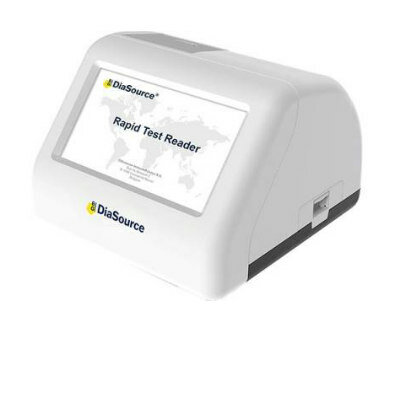Newly Discovered Protein Mechanism Protects Cells during Injury
By LabMedica International staff writers
Posted on 19 Jun 2012
Investigators have identified a new function for a protein that protects cells during injury and could ultimately transform into treatment for disorders ranging from cardiovascular disease to Alzheimer’s.Posted on 19 Jun 2012
Researchers reported online June 7, 2012, in the journal Cell that a type of protein called thrombospondin activates a protective pathway that prevents heart cell damage in mice undergoing simulated extreme hypertension, cardiac pressure overload, and heart attack.
“Our results suggest that medically this protein could be targeted as a way to help people with many different disease states where various organs are under stress,” said Jeffery Molkentin, PhD, lead investigator and a researcher from Cincinnati Children’s Hospital Medical Center (OH, USA) and the Howard Hughes Medical Institute (Chevy Chase, MD, USA). “Although more study is needed to determine how our findings might be applied clinically, a possible therapeutic strategy could include a drug or gene therapy that induces overexpression of the protein in tissues or organs undergoing injury.”
Thrombospondin (Thbs) proteins are generated by the body in cells where tissues are being injured, reconfigured or remodeled, such as in chronic cardiac disease. They appear in part of the cell’s internal machinery called the endoplasmic reticulum. There, Thbs activated a stress response process to regulate production of other proteins and help correct or lose cells of proteins that misfold and lose their form and planned function. Misfolded proteins help fuel tissue damage and organ dysfunction.
The researchers honed in on how one thrombospondin protein (Thbs4) triggers cellular stress responses in mice bred to overexpress the protein in heart cells. They compared how the hearts of the Thbs4-positive mice responded to simulated stress and injury to mice not bred to overexpress cardiac-specific Thbs4.
Overexpression of Thbs4 had no effect on the animals prior to cardiac stress--although during simulated hypertension and cardiac infarction the protein reduced injury and protected them from death. Mice not bred for Thbs4 overexpression were extremely sensitive to cardiac injury, according to Dr. Molkentin, a member of the division of molecular cardiovascular biology and Cincinnati Children’s Heart Institute.
The researchers reported that overexpressed Thbs4 enhanced the ability of heart cells to secrete supportive proteins, resolve misfolded proteins, and correctly reconstruct extracellular matrix--connective tissues that help provide the heart with a functional form and structural integrity.
Vital to the stress response process was Thbs4 activating and regulating a transcription factor called Aft6alpha. Transcription factors help decode genetic instructions of other genes to control their expression. In the case of Aft6alpha in the heart, it helps mediate repair processes. When Aft6alpha is activated by Thbs4, the endoplasmic reticulum in cells expands and the production of chaperone molecules and other repair proteins is enhanced. Mice bred not to overexpress cardiac Thbs4 did not exhibit activated Aft6alpha or robust repair processes following cardiac injury, leading to their poor outcomes.
According to Dr. Molkentin, the investigators continue to analyze the Thbs-dependent stress response pathway to better clarify the involved mechanisms. This includes determining how the pathway affects laboratory models of neurodegenerative diseases like Parkinson’s, Alzheimer’s, and amyotrophic lateral sclerosis.
Related Links:
Cincinnati Children’s Hospital Medical Center
Howard Hughes Medical Institute













